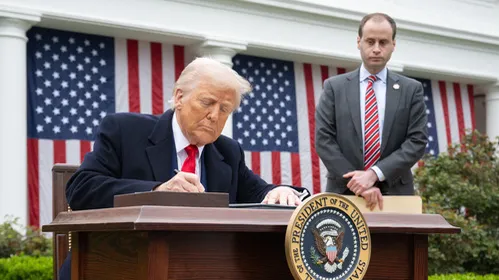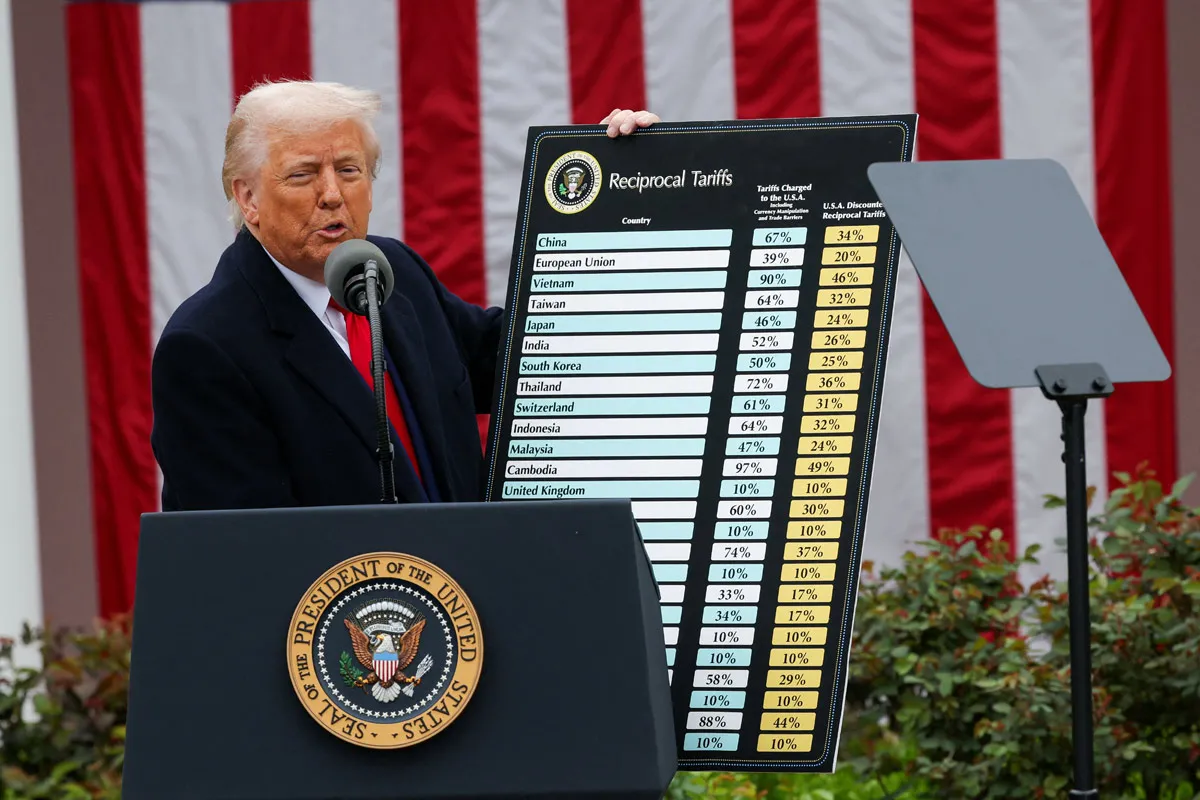What do Trump’s reciprocal tariffs mean for India?
Trump’s Tariff Hike: Impact Of America’s 26% Tariff On India: US President Donald Trump has imposed reciprocal or reciprocal tariffs on various countries of the world, including Asia, as per his previous plan. By implementing the new tax system, he aims to fill the shortage of American industry and boost domestic production. He announced the retaliatory tariff policy with the slogan “Make America Great Again”.
According to this policy, a 10% tariff will be imposed on all types of goods imported from various countries from April 5 to 8. From April 9, the retaliatory tariffs announced by various countries will be levied. This will affect 60 products from various countries related to the US market.

The policy is based on three types of imports:
Pharmaceuticals, semiconductors, copper, and energy-related products are all excluded from the new tariff regime.
A 25% tariff or duty will be imposed on industrial goods such as steel, aluminum, and automobiles.
All other remaining products and goods will be subject to country-based tariffs.
Asian countries that trade heavily with the US will be the most affected by Trump’s retaliatory tariffs. China tops the list. Trump has imposed a 34% retaliatory tariff on China. Earlier, a 20% tariff was imposed on goods imported from China. So, Chinese goods will now be taxed at 54%. Retaliatory tariffs of 46% have been imposed on Vietnam, 37% on Bangladesh, and 36% on Thailand.
In addition, Trump has imposed retaliatory tariffs of 49% on Cambodia, 48% on Laos, 44% on Myanmar, 44% on Sri Lanka, 32% on Taiwan, 32% on Indonesia, 27% on Kazakhstan, 26% on India, 25% on South Korea, 24% on Japan, 24% on Malaysia, 24% on Brunei, 17% on the Philippines, 29% on Pakistan, and 10% on Singapore.
A senior official in the Commerce Ministry, which is analysing the impact of Trump’s 26% retaliatory tariffs on India, said, “The ministry is reviewing the impact of the announced tariffs. There is a mechanism in the US policy. If a country can properly address the concerns raised by the US, then the retaliatory tariffs announced by the Trump administration can be reversed against that country.”
Tariffs imposed on India may bring new opportunities
Trump’s new tax policy has a lot of opportunities for India. Compared to other competitors, India has been imposed with relatively low tariffs. The Global Trade Research Initiative (GTRI) report said that a 25% tariff will be levied on Indian exports of steel, aluminum, and automobile products. No tax will be imposed on pharmaceuticals, semiconductors, copper, and energy-related products. From April 9, a 26% duty will be imposed on the remaining goods. In addition to the 26% retaliatory duty, an additional 25% duty will be levied on automobile products.
The impact of the 26% tariff is certainly significant. But it is much lower than the tax regime faced by other Asian competitors. Such a low tariff regime will create new possibilities and opportunities for India. Indian businesses will get the opportunity to increase their share in the US market. But if their products are priced higher than domestic requirements in terms of quality and demand, then India’s influence in the US market will increase. Compared to India, China, Vietnam, Taiwan, Thailand, and Bangladesh have higher tariffs. So this could help increase the demand for Indian products in the US market.
In what areas are there opportunities for India?
1- Textiles and Garments: India’s textile sector has emerged as a clear winner after Trump’s retaliatory tariffs. The US imports textiles from China and Bangladesh. But with a 54% retaliatory tariff on China and a 37% retaliatory tariff on Bangladesh, the price of Indian products in the US market will be lower, and demand for them will increase.
India has a large textile manufacturing base. American retailers may choose New Delhi as their first choice for new orders as Indian products are cheaper. Similarly, global brands are likely to shift their manufacturing facilities from China and Bangladesh to India. This will also result in lower tariffs for them.
2- Electronics and Smartphones: India can also benefit from the electronics sector. Vietnam and Thailand will face heavy tariffs from the US on electronics and telecom goods. In such a situation, India can emerge as an alternative. India’s Production Linked Incentive (PLI) scheme has attracted companies like Apple and Samsung, which have established their dominance in the global market. Now, the opportunity from the tariffs can further strengthen India’s electronics supply chain. Especially in the smartphone and its accessories sector, India can emerge as a new player.
3- Semiconductors: India is certainly lagging in semiconductor manufacturing capacity compared to Taiwan and South Korea. But the 32% tariff imposed by the US on Taiwanese goods could attract companies to India. India has the opportunity to increase its capacity in packaging, testing, and utilization of already used chips. With stable infrastructure development and policies, India can actively play a leading role in the global chip ecosystem.
4-Machinery and Machinery: Before the US tariff announcement, Chinese and Thai traders exporting machinery, automobile parts and machinery were affected. So if India plays its cards right, then New Delhi can emerge as an alternative player in this sector. But for this, it will have to attract FDI, increase production and make the quality of the products world-class.
India’s benefits are conditional, not automatic
While India has the opportunity to announce tariffs, there is no guarantee that it will reap the benefits. To address this situation, India will have to address the organizational issues that are affecting productivity growth.
1- India will have to meet the large export orders by increasing production capacity.
2- Domestic manufacturing must be accelerated. This will not only ensure that goods are not wasted here, but also that production will take place.
3- Ease of doing business needs to be improved. Especially, changes need to be made in labor laws, business-related issues, and the tax system.
4- Modernize logistics and infrastructure to reduce costs and improve supply chains
5- Long-term investment in education and technical skills development is required for productivity growth in all sectors.
ALSO READ: Sikandar Movie Famous Quotes By Salman Khan





